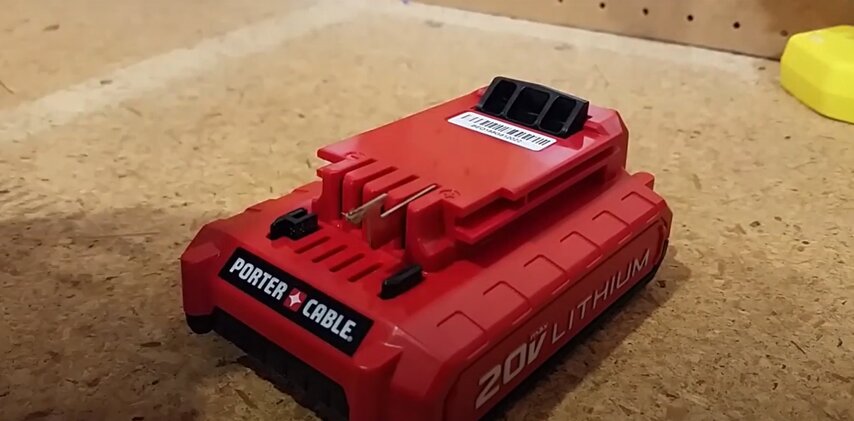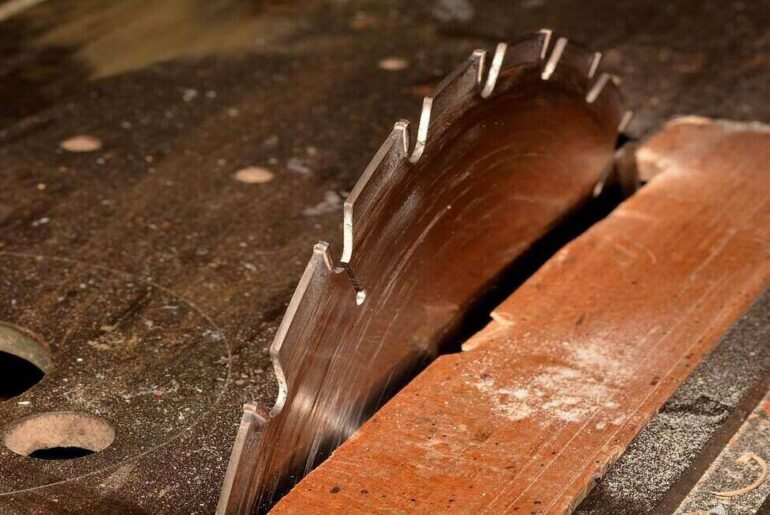All porter cable 20V Max batteries need a cordless battery charger. It has a rapid 2-amp charge rate with overload protection that secures from damaging cells. Unfortunately, many porter cable battery charger problems occur now.
Here an LED indicator that shows battery position and remaining charge quantity. This charger is suitable for all 20V Max power accessories like porter cable 20V lithium drill, oscillating device, bare machine, porter cable blower, porter cable flashlight, cordless device, drill driver, and a nail gun.
It warranties customers with power extra committed to maintaining adequate customer services. The battery’s charging duration ranges from model to model; on the other hand,some take 35-100 minutes while some take further. However, these problems are highly visible nowadays. Let’s see the battery charger’s issues and their solutions.
How Does A Porter Cable Battery Charger Work?
Drilling tools usually need high-performing batteries, and since their introduction, most people have been using NiCad batteries, but the introduction of lithium batteries gives customers a far better choice.
Porter-Cable is an American company that has been operational since the last century, and it offers sort of drilling machines that are of top quality. These Porter-Cables that use batteries are convenient as they’re portable.
Re-designed Porter-Cable power tools introduced in 2005 use lithium batteries; we are getting to check out a number of the lithium battery benefits over the opposite sorts of batteries.
The Porter-Cable 20V battery lasts approximately 30 minutes under excessive loads. It is a safe indicator of home usage and short project purpose. Most of the batteries have the same duration of use.
It generally has nearly 5-8 hours charging in the unit while using a standard charger. If we charge and store, it falls to near 5% within 24 hours later by 4.0% per month depending on accumulator deterioration.
It needs an excellent source of energy supplies to get charged and not harm the battery strength. If the voltage is low, then the battery will indicate that it is charging, but it will not deliver its best service.
A client once objected that the battery dies after 5 minutes of use, even if he just took it after fully charged. So this is the problem with the porter cable battery charger.
Advantages
The recent technology in batteries has made cordless drills very popular within the market. Introducing lithium batteries was such an enhancement of the old Nickel Cadmium (NiCad) as they do not get to learn and have tons of other advantages.
- They could not hold a charge for extended NiCad batteries. That is where a porter-cable battery charger comes in handy.
- You do not need not to buy extra batteries. You can charge your porter-cable battery at your convenience. There’s no problem with running the battery when it’s not entirely loaded.
- You can plug it in any time, and you can also use it at any moment. Hence it is convenient and a far better choice over having to buy extra lithium batteries.
- Even though lithium cable batteries are readily available within the market, it will always cost extra bucks to keep spare ones.
- A porter-cable 18V battery can be readily recharged within a short time. This provides you a spread, and so the batteries can improve the performance of your tools.
- Porter-cable batteries charger is essential as they are portable and lightweight. All you need to do is insert the battery, and your battery will be ready for performance.
- Porter-cable battery chargers don’t need any maintenance to supply outstanding performance. Unlike other battery chargers, you can recharge your porter cable lithium 18V battery up to a thousand times and above.
These suggest the batteries have an extended life and that they are getting to serve you for a real while.
The porter cable battery chargers are light, and the tool won’t make any heavy by adding a porter cable lithium battery.
Counting on the charger, you’re using charging porter lithium batteries are often super-fast. You’ll charge your battery up to one hundred PCs and work with it for a few hours when the battery is at a low charge to continue together with your task.
Just in case the battery hits a 100, and if you forget to unplug it, there’s no problem as these chargers don’t damage your batteries.
Disadvantages
There are battery chargers that can charge several types of batteries, but porter-cable battery chargers are only compatible with specific models. If the specifics don’t match, it won’t work with other batteries and might even cause harm.
Having limitations on battery models might turn out to be quite a trouble if those specific batteries are not readily available on the market.
- A working power supply to the charger is also crucial to ensure that your battery is charging accurately. That is when things might be confusing when the charger’s LED light indicates its work mode, but due to low voltage, it won’t work.
- Overcharging will also result in shorter battery life and it will make the battery drain faster, which will damage the poles of the battery. To avoid this, you must put it to charge as it slows down.
- Another highly noticed porter-cable battery charger problem is overheating. If it’s in a humid area, it might lead to permanent damage to the battery and sometimes cause an explosion. Letting it rest for a while is the best solution to prevent overheating.
Power failure commonly occurs if left in charge for an extended period. Not only it shortens battery life but also damages it permanently.
Porter Cable Battery Charger Problems: How to Fix?
It might seem a lengthy process to repair the battery charger. The following steps will surely save you from spending some extra bucks at the mechanic’s shop.
- Begin with gathering all the items needed for the repair. Prepare all the precise tools and materials required as a screwdriver, soldering equipment, multimeter, and solder pump for removing solder.
- Following that, determine the defective component which needs to be changed. You need to find out the source of the defect and decide further. If you’re having an issue determining its correct components, you’ll measure it or search online about its measurements.
There are different battery chargers; the porter-cable battery has the NiCad, NiMh, and thus the Li-on battery type. Hence, you ought to determine the right kind of battery that you need.
Voltage also regulates how briskly the battery releases energy. You can buy new batteries online or in hardware stores nearby you.
- Once everything is ready at hand, it’s time to fix your charger. Disconnect first the connections within the old battery. Cut the heat-shrink if it’s available in your battery pack. Other battery chargers don’t have a heat-shrink.
- Remember the precise formation of your old battery pack for your reference. Don’t use an excessive amount of heat when using a hand tool. It’s going to damage your charger, or it might even cause an explosion.
For a porter-cable 20V lithium battery charger, set the multimeter to 24 volts. Then plug your cordless drill charger into a wall socket because it won’t work otherwise.
- Touch the multi meter’s black negative probe in the metal terminal at the charger’s bottom (the terminals will have a minus or negative indicator).
- Switch on the voltmeter unit, and try to make sure that the power is going to the meter. Read the instructions to connect the test probes with the voltmeter.
- Then set the selector to the top level for DC voltage or anything that is advised for the meter. After that, pick a battery or a battery package that adjusts well with the battery charger, but ensure that the battery has no error and isn’t leaking internal liquid.
- Hold the battery’s positive corner with the right (red) probe and take the black one; then join it to the other side of the battery.
- Keep monitoring the readings on the volt, and then watch carefully where the pointer of the voltmeter is indicating. You should then switch the test probes if it’s on the left or minus side, and if that’s on the correct side, that will show that the cell is charging.
The proportion of charge is determined by where the indicator points in your voltmeter. You need to check the charger to determine what proportion of energy it is providing you, and still receive an odd result from your batteries.
The indication means that you have a faulty charger, and it needs to be replaced. If your charger has enough electrons flowing through the charger it confirms that the energy supplier has an issue and won’t carry the necessary power.
After changing the defective component, always remember to dispose of the wasted component carefully. Throwing away battery chargers is against the law. It’s a hazardous material that may cause damage to the environment.
Final Words
Porter-cable battery chargers provide you with the easy charging of a battery at any moment. If you encounter porter cable battery charger problems, you can do your repairs on your porter cable battery charger as long as you are taking safety precautions.
Always remember that if you do not want your battery to damage, better use it correctly and do not store it in an inappropriate area. However, knowing how to identify and sort out the problems will increase your knowledge besides saving money.




